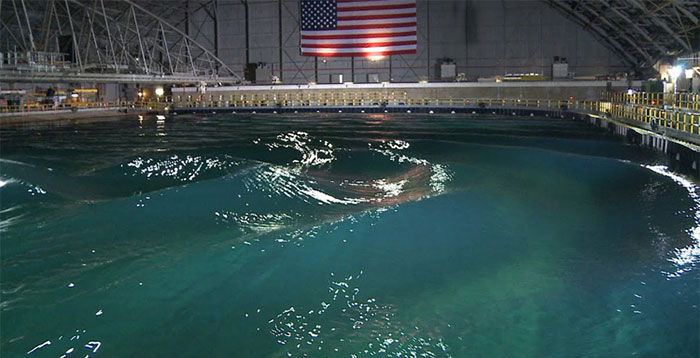The indoor tank, known as MASK, holds approximately 45 million liters of water and can simulate natural conditions to help the U.S. test naval vessels. This massive water tank is located at the U.S. Navy’s Surface Warfare Center in Maryland and was constructed in 1962.
MASK contains about 45 million liters of water and is equipped with 216 wave-making panels that recreate and simulate severe wave conditions, ranging from calm seas to storm-like waves. These panels can generate waves up to 4 feet high, sufficient to simulate the worst maritime conditions for testing new ship models.
A bridge extends along the length of the tank. This bridge features a tow carriage underneath that can pull a model ship around the basin at speeds of up to 15 knots (nearly 30 km/h).
This indoor ocean is utilized by the U.S. Navy to test the stability and maneuverability of new ship models up to 9 meters long, allowing for the identification of their strengths and weaknesses. Tests conducted here also help assess whether crew members can launch torpedoes and land helicopters in dangerous situations.

MASK contains approximately 45 million liters of water, equipped with 216 wave-making panels.
The edges of this gigantic tank are made of angular concrete panels that absorb and dissipate energy during test runs.
The MASK tank plays a crucial role in the development of effective ship models and the establishment of operational guidelines. Data collected during ship testing helps the U.S. Navy save billions of dollars.

















































